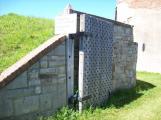33
Fort Mississauga National Park22 July 2009
Niagara-on-the-Lake, Ontario, Canada
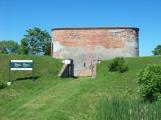 Credits:
Credits:James Black
35
Living HistoryWhile doing some research into the origins of Old Fort Henry in Kingston Ontario, during the summer of 1974, the author of this storyline came across a unique reference to Fort Mississauga in a report written by the highly respected historian, Ronald Way. Way's imagination made it possible for places like Old Fort Henry, Upper Canada Village, and even Louisbourg in Nova Scotia, to come alive as 'living museums' with summer students re-enacting the roles of historical characters. Way's report was an assessment of Canada's early historic sites and listed different potential sites to be rebuilt as museums. Fort Mississauga was at the top of the list to be rebuilt! Why? Way's logic seems very plausible even now - Fort Mississauga was in far better physical condition then any other historical site in Ontario. Old Fort Henry was never completed even when it was originally built. Fort Mississauga, on the other hand, was built during war and stands even to this day as an example of the workmanship of Canada's Coloured Corps and their contributions.
36
Fort Mississauga, standing since 181322 July 2009
Niagara-on-the-Lake, Ontario, Canada
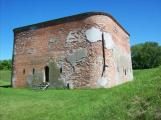 Credits:
Credits:James Black
37
Underground storage, part of star-shaped earthen works20 July 2009
Niagara-on-the-Lake, Ontario, Canada
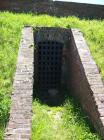 Credits:
Credits:James Black
38
Many of the Forts and historic sites Ronald Way made into living museums are a tribute to the average citizen who fought battles, lived under terrible conditions and who, by their sheer survival, are a tribute to being Canadian. Today, Fort Mississauga, in spite of being almost 200 years old, still stands and is ready to become a living museum celebrating almost 300 hundred years of struggle in the fight against slavery and lingering discrimination in Canada and the United States.39
University Student as Historic Pioneer Corps through 'Living History' at Old Fort Henry, Kingston9 July 1974
Old Fort Henry, Kingston, Ontario, Canada
 Credits:
Credits:Courtesy: Betty Black
40
Artist depiction of Black Soldier Pioneer Field Engineer - no 'Living History' at Fort Mississauga20th Century
Unknown
 Credits:
Credits:Norval Johnson Heritage Centre
41
Discrimination in the Military during the Modern EraThroughout much of the 1800's, numerous Canadians played significant roles in military operations. One very notable Canadian was a sailor, William Edward Hall. Hall was awarded the Victoria Cross in 1857. Others included medical doctors who trained in Toronto and joined the Union Army to bring the last vestiges of slavery in United States to an end. Jeremiah Jones was responsible for capturing a machine gun nest during the First World War. The Coloured Corps were called out to end religious conflict in the St Catharines area when shots were fired between two groups during the construction of the first Welland Ship Canal. The Coloured Corps also volunteered during the Rebellion of 1837-38, bringing the conflict to an end with the Carolina, a rebel supply ship, being set adrift over the Canadian Falls by the Coloured Corps Volunteers. The rebellion had the earmarks of an American invasion by those who supported slavery, and the refugee Freedom Seekers who had made Canada their home were not going to allow that to happen in Canada.
42
"The American Steam Packet 'Caroline' Descending the Great Falls of Niagara"29 December 1837
Niagara Falls, Ontario, Canada
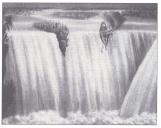 Credits:
Credits:Toronto Public Library (TRL), J, Ross Robertson Collection, JRR 1231
43
"The steamboat Caroline, in flames and breaking up, just above Horseshoe Falls"29 December 1837
Niagara Falls, Ontario, Canada
 Credits:
Credits:It Happened in Niagara, Revised and Enlarged Edition; Sherman Zavitz; Lundy's Lane Historical Society, 2008
44
Dr. Anderson Abbot, Canadian Trained Doctor, Officer of the Union Army in the United StatesMid-1800s
Unknown
 Credits:
Credits:The Freedom Seekers; Daniel G. Hill; Book Society of Canada Ltd., Canada, 1981
45
First World WarIn spite of a strong history of loyalty to Canada, hundreds of Black volunteers were turned away during the First World War. A letter signed by Major General Chief of Staff of Canada sums up the opinion of many officers who were ignorant of the earlier contribution of these loyal citizens.
"Nothing is to be gained by blinking facts. The civilised negro is vain and imitative; in Canada he is not being impelled to enlist by high sense of duty; in the trenches he is not likely to make a good fighter; and the average white man will not associate with him on terms of equality. Not a single commanding officer in Military District No. 2 is willing to accept a coloured platoon as part of his battalion and it would be humiliating to the coloured men themselves to serve in a battalion where they were not wanted..."
(Signed )
Major General Chief of Staff
46
Private James Grant, left, with unknown companion, in typical WWI uniform1914-1918
St Catharines, Ontario, Canada
 Credits:
Credits:Norval Johnson Heritage Centre
